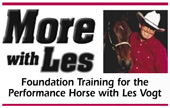 Next in a series
Next in a series
Before continuing on new steps in next issue, we’ll revisit these reference points
USING YOUR HANDS
Ideal rein position
- Hold your reins as wide or wider than your shoulders for maneuverability
- Keep your reins near or in front of the saddle horn
- If your reins are too long, you are sacrificing reaction time and ability
- Remember to keep slack in the rein
- To shorten your reins, you should learn how to shuffle them down as shown
Quick release
- Rewarding your horse quickly is critical
- A technique is shown for a “spring-loaded” release
Direct vs. indirect rein
Direct rein
- Also known as the inside rein
- Controls direction of travel
- Controls the bend
Indirect rein
- Also known as the neck, brace, or outside rein
- Controls forward and backward motion
- Slacken for forward
- Tighten for backward
- Moves shoulders laterally
- Can be used to create more vertical flexion
- Useful for small circles and spins
- Causes the pivot step
FEET & SEAT
Stirrup Length
- Shorter stirrups, especially down fence or in front of the herd
Weight Distribution
- Keep your weight in your seat, not in your feet
- Just enough weight in the feet to keep the stirrups in place
- This will help to stay back in the saddle, behind the motion, and slow your horse
Types of boots
- Crepe soles can be dangerous; if you want to wear them take off excess sole
- Looser boots are safer
- Lace-ups can be dangerous because they won’t come off if your foot hangs in the stirrup after a fall
Position of feet in the stirrup
- Les rides with feet all the way in the stirrup. This lets him use the stirrup as a fulcrum so he can choose when he does
and does not want his spur to make contact with the horse
DENTAL CARE
Teeth are second only to soundness
- Abnormal or strange responses to pressure may indicate dental problems
- If your horse flings his head in the opposite direction of an aid, then follows your hand, he may be reacting to pain in his mouth
Molars are the most problematic
- Teeth wear often wear unevenly and the outside edges of the molars may flare or develop sharp hooks that can cut the inside of the mouth and/or affect your ride
To examine your horse’s teeth
- Insert your finger into the corner of your horse’s mouth, pointing up Move it back and down to get a quick feel of the molar edges Don’t linger. If hooks are present you could cut yourself on them or your horse might bite your hand
- Do this very carefully. Your horse can bite pretty hard!
Have your horse’s teeth checked at least once a year
Editor’s Note: More with Les is a regular California Horsetrader column. Les Vogt has won more than 15 World Championships, including two wins at the NRCHA Snaffle Bit Futurity. Although Les still rides and occasionally shows, his focus is giving clinics around the world and developing products for the performance horseman. To learn more about Les and to see his clinic schedule, visit the Web site: www.lesvogt.com
 Next in a series
Next in a series
Leave a Comment
All fields must be filled in to leave a message.